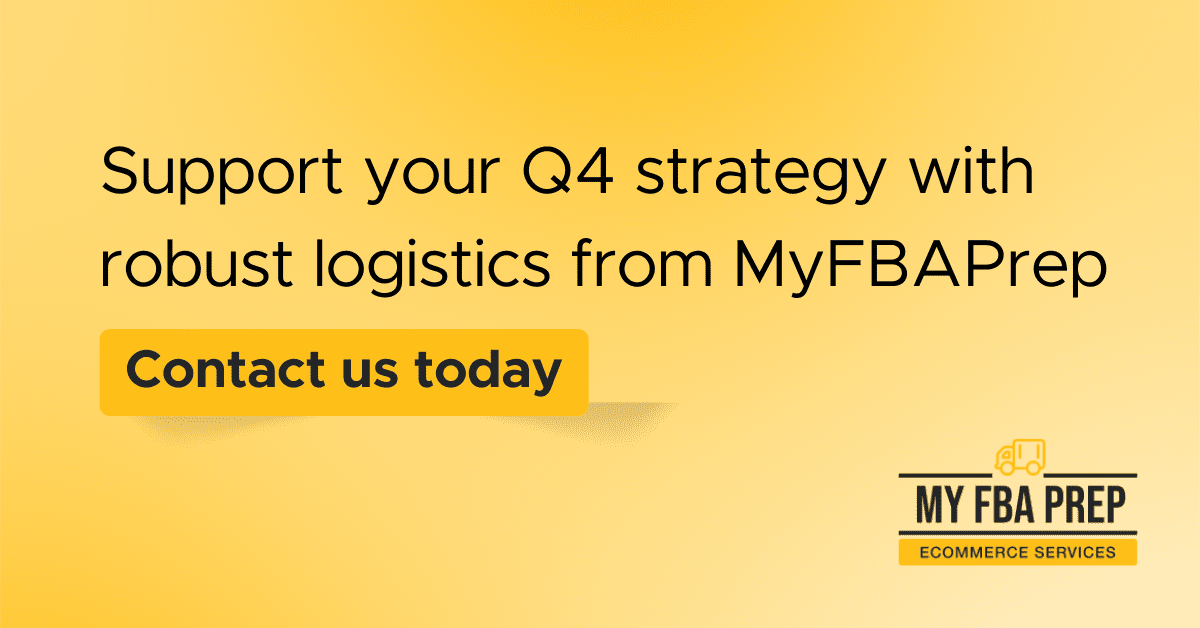
5 Holiday Trends to Guide Your Q4 eCommerce Strategy

The eCommerce industry is ever-changing. Things move fast and trends come and go. In an industry that’s always evolving, you need to stay on your toes.
Jump on a trend too late and you may have to stand on the shorelines as your competitors (and customers) sail on by. If you want to improve your product sales, you need to stay informed of the seasonal trends throughout the year.
Meet customers where they are by keeping on top of the current and upcoming trends. Let’s look at some of the biggest eCommerce holiday trends to be aware of this Q4.
5 Holiday trends to be aware of this Q4
There is a never-ending list of eCommerce strategies you can leverage throughout the year to boost your business. From bundle strategies to free shipping offers and post-purchase surveys, it can be difficult to know which ones to pick up and leverage for your store.
While some strategies can be used day in and day out, others will only be here for a fleeting moment in time. Move too slow and you might miss the next big thing before it’s even happened.
To help you stay ahead of competitors this Q4, here are five of the biggest eCommerce holiday trends to be aware of.
Marketplace sales set to increase due to inflation
All around the world, inflation has been creeping higher and higher. The US inflation rate has reached new heights since the early 1980s. Consumers are being hit by price increases at every angle and their wallets are sure to feel the pinch.
Many shoppers will cope with record-high inflation records by putting a halt on spending. Meanwhile, other shoppers will move toward “thrifty” shopping styles as they try to be more cost-conscious.
Marketplaces such as Amazon make it easy for customers to shop around. They can easily search for a wide range of products to try to get the best deal.
The top three spots for the leading eCommerce sites in the U.S. were all held by marketplaces. In 2021, Amazon recorded 2.45 billion monthly visits as it soared into the top spot. Marketplace competitor, eBay ranked second with over 885 million visits, and Walmart came in third.
As inflation rates rise, it pays to be active on marketplaces. Embrace a marketplace model to give your store a greater chance of getting in front of your customers.
Consumers value marketplaces for convenience and value for money. As a retailer, you too can benefit from listing products on marketplaces. Marketplace selling lets you keep a close eye on competitor pricing strategies. Use a competitor price tracking tool to monitor competitor product price changes and automatically adjust your product prices. By doing this, your products will remain competitively priced during the holiday season and you’ll be the preferred seller for consumers looking to make thrifty online purchases.
Wondering which marketplace is best for you? Check out our guide on Walmart vs. Amazon.
Party supplies are on the rise
COVID-19 restrictions and safety measures over the past couple of years meant many people missed out on holiday celebrations and in-person events. The holiday season the time to get together with loved ones. We expect to see an increase in party supply purchases as people start planning their holiday gatherings.
An ongoing survey by Numerator highlights that 49% of consumers are planning to get together to celebrate holidays throughout 2022. Christmas, Thanksgiving, and New Year’s Eve are set to be the biggest holidays for gathering with friends and family in Q4.
In their survey, Numerator found that 90% of consumers intend to buy something for their celebrations. So, party supply retailers should look to stock the (virtual) shelves in anticipation of more holiday parties compared to last year.
Don’t forget to invest in your marketing strategy and plan campaigns around party supplies too. Increased awareness will help further boost your sales while consumers are on the hunt for the best party supplies they can find.
Welcoming the live shopping era
Live shopping has been on our radar for the past few years now. In the last 12 months alone, we’ve seen social media giants Meta experiment with live shopping and TikTok trialing live shopping in the UK.
Whether it’s here to stay for the long-term or it’s just a short-term fad, we expect to see more live shopping as we head into the Q4 holiday season. Live shopping is a widely popular sales strategy in China. We assume the Western market is just trying to find its feet in the world of live commerce.
As we move toward the Q4 holiday season, consumers will be overloaded with a paradox of choice. Hosting fun, immersive live shopping events will offer an enticing edge over competitor retailers. Live shopping can positively influence shopping habits through gamification, FOMO (fear of missing out), and other immersive shopping strategies.
Seeing to the needs of sustainable shoppers
Sustainable lifestyles are on the rise as more people commit to doing their part to help the world around them.
With sustainable lifestyles and attitudes comes sustainable shopping habits. Consumers are aware of the impact consumerism has on the environment. They value retailers with sustainable shopping practices and transparent brand values.
But, brand values need to go beyond a sustainability mission statement on your about page. Consumers want to shop with brands that actively live their sustainable values. Research by Amazon found that 62% of consumers actively sought brands with sustainable business practices. They care about the environmental and social impact of the brands they shop with.
For other consumers, Q4 sustainability choices are driven by COVID-19 lifestyle changes and 2022 inflation concerns. The global pandemic caused customers to shop more locally and seasonally, causing many consumers to adopt sustainable shopping habits inadvertently.
Meanwhile, the rising cost of living means customers are looking for new ways to reduce impulsive spending habits. Adopting a more sustainable lifestyle and buying long-standing, durable goods is one way they can ensure they’re getting their money’s worth from their purchases.
Incorporate sustainable practices into your retail model to accommodate sustainable shoppers. Explore sustainable materials for products and packaging. Set up a recycling scheme that makes it easy for customers to return old goods for reuse. Develop a range of sustainable gifts and be loud and proud about your ethical values.
Whatever you do, make sure you walk the walk as well as talk the talk. Consumers will be able to see through dishonest practices.
Rise in research online, purchase offline (ROPO) shopping behavior
The 2020 global pandemic meant online sales surged. Local shopping malls were closed, people stayed home, and online shopping was a convenient solution. But, what does that mean for Q4 of 2022?
Shopping malls are open, brick-and-mortar stores are back in action, and people’s lives are returning to a degree of normalcy. As brick-and-mortar stores reopen, we expect to see a rise in research online, and purchase offline (ROPO) shopping behavior.
Consumers will blend the convenience of shopping online with the experience of in-person shopping. Take click-and-collect, for example. Consumers can shop from the comfort of their homes and then collect their goods in person, rather than having to wait for delivery.
Curbside collections
Curbside collections don’t seem to be slowing down. Perceived as being faster and cheaper, click-and-collect is a ROPO shopping tactic many customers will continue to use. Consumers are busy during the holiday season so we suspect many will find comfort in the convenience of ROPO shopping behaviors.
With holiday events and parties on the horizon, many shoppers may want to reduce their exposure to strangers to minimize the passing of germs, infections, and viruses.
Leverage ROPO
So, how can you leverage ROPO strategies for your online store? Lean into the online research element of ROPO by offering information online that helps customers make purchase decisions. From informative product guides to online reviews, and events, you can offer helpful insights to aid purchase decisions. Investing in influencer campaigns, online events, and loyalty schemes also helps build your online visibility and positions you as the go-to retailer.
Holiday seasons tend to go hand-in-hand with gifting seasons. Develop an omnichannel strategy that spans online and offline store experiences for your customers, helping them seamlessly move from online browsing to in-person shopping. You could create online wishlists or reward schemes for shoppers.
Wrapping up — eCommerce holiday trends to incorporate into your Q4 retail strategy
Move too slow and you might miss the next big thing before it’s even happened. If you want your Q4 to be a success, invest in upcoming holiday trends.
Many of this year’s Q4 trends will be influenced by last year’s global pandemic and emerging concerns around inflation. Therefore, take care when choosing holiday trends to implement. Test performance and don’t be afraid to switch tactics if something isn’t working.
Additionally, data is your friend when testing trends. What works for one retailer may not necessarily work for your brand, so don’t be too hasty. Make sure you do your research, test performance, and tweak strategies as you go along. Above all else, have fun and embrace the holiday shopping season.






